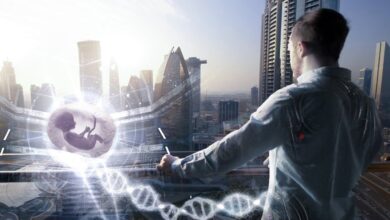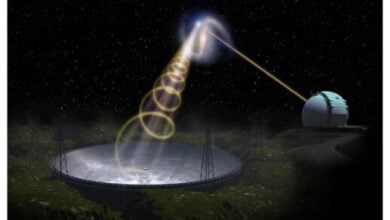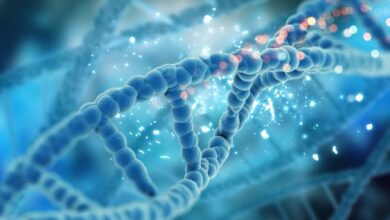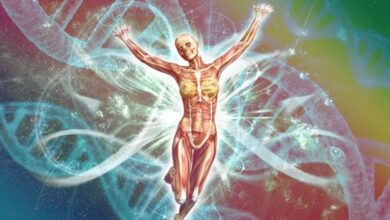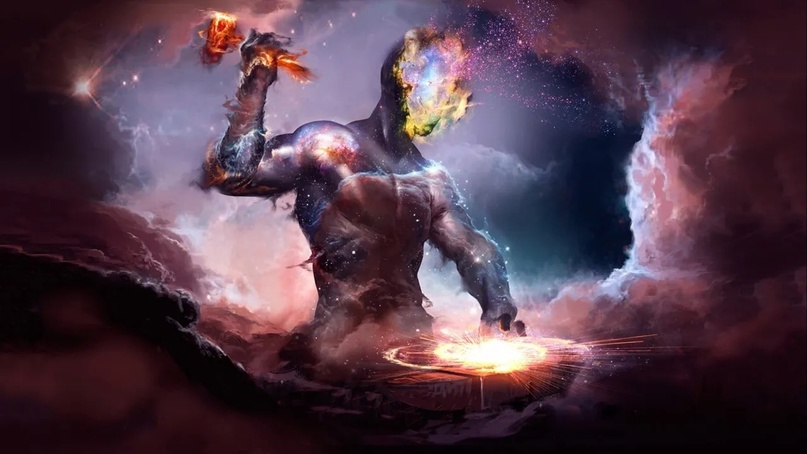
On the meaning of life in the broadest sense of the word
(ORDO NEWS) — I don’t mean the existential meaning of life, although it may eventually lead to this. I mean it in a much more specific sense: what is the real function of biological life?
Some will say that this is a meaningless question, like asking “what is the stone for”? Life has no purpose, it just is, it just exists doing its thing. At the first stage, this is very true, more or less tautological and universal. It’s also boring, so I’ll just leave that line of thought to play around with more interesting ideas.
A Darwinian would answer that the function of life is simply to reproduce itself. Life is a survival machine, optimized to reproduce itself. Organisms are simply complex biochemical machines created by the work of genes to create even better genes, and there is nothing more to it.
This raises a number of questions, for example, if the whole purpose is to replicate, then surely life is not very good at it, since, given all the sexual recombinations, mutations, and the ability of bacteria to rewrite their genes on the fly as needed, it seems that life at all not very good at repeating itself, as the same pattern never repeats exactly.
The entire process of evolution, by definition, requires that the pattern change in such a way as to become essentially unrecognizable over a long enough succession of generations.
The Darwinist will say that organisms that have changed to gain an advantage over competitors will displace them, and this, of course, seems to be true, but then again … where is the repetition here?
Reproduction is a key part of the life cycle of any organism, but it is only one of its parts … and for most organisms, a very tiny part, occupying a tiny fraction of its attention and activity. You can just as easily choose some other part of the cycle, say that’s the whole point, and build an equally plausible narrative around it.
One of the basic properties of life is metabolism. Organisms take in matter and energy, process them, use some of them to maintain or grow the pattern they are composed of, and remove what is unnecessary or harmful.
Stop metabolism and death will come… it’s practically the biological definition of death. Organisms are a kind of standing waves of matter, energy and information, the existence of which requires a constant flow of matter, energy and information. No flow - no body.
From a Darwinian point of view, the presence of organic life on Earth is more or less a fluke. The Earth is just a ball of rock that, through the right combination of surface temperature, gravity, atmospheric density, mineral and surface water content, and some fortuitous combination of organic chemicals early in its history, accidentally evolved self-replicating molecules (which actually never not reproduced, but anyway), which then spread across its surface like debris from a pond.
It will exist for several hundred million more years, mindlessly reproducing itself, before eventually dying out when conditions are no longer suitable. In the end, the Earth will again become a lifeless rock, and its organic history will be only an interesting epiphenomenon of complex chemistry, which no one remembers, in a universe where “interesting” does not matter, because the ruthless stars looking down are not able to be interested in what -or.
This gloomy view arises more or less directly from the idea of life as a complex construction of selfish replicators that have proliferated for the simple reason that they reproduce well. But what if we look at life from a more metabolic perspective? After all, unlike reproduction, metabolism is something that life always does, must do all the time.
Metabolism is essentially just the recycling of matter and energy. Ultimately, everything that happens on Earth is a consequence of the influence of cosmic energies.
On a daily basis, most of this energy comes from the Sun as solar radiation, with very little reaching the Earth’s surface. Some of the energy is temporarily absorbed by the atmosphere, land and water, determining the weather, which in turn changes the surface through erosion.
Much of this energy is reflected back into the void. There is also a small contribution from moonlight, reflected light from other planets, light from stars, light from distant galaxies, and so on; but although it looks beautiful, it does not play any significant energetic role.
Then tectonic activity - continental drift, earthquakes, volcanoes. At first glance, this looks like something that the Earth produces itself, since it comes from the interior, and not from heaven. The source of the Earth’s tectonic activity is in the latent heat emanating from the core. This heat ultimately comes from two sources.
The first is the gravitational potential energy of a giant molecular cloud from which the Earth was formed - a structure scattered over light years, condensed into something with a radius of several thousand kilometers, where gravitational potential energy is converted into heat.
The second is from the decay of radioisotopes, mainly uranium, potassium and thorium, which were seeded into Earth-forming material by the explosion of a nearby star. The tremendous energy released by this supernova (eventually).
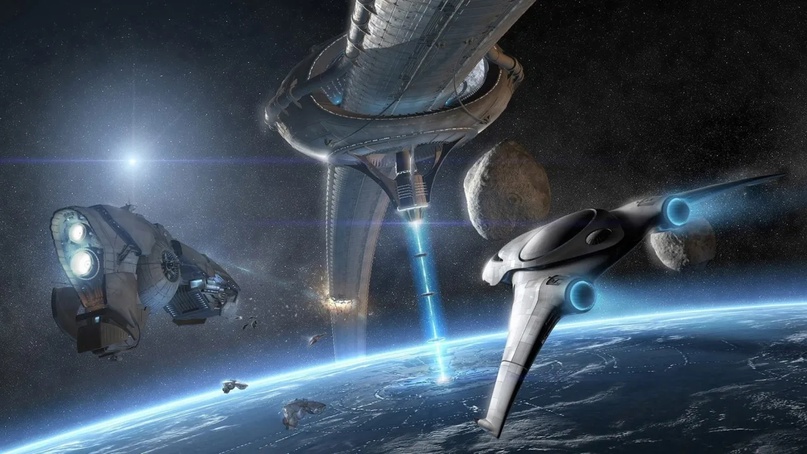
The earth is not a closed system. Everything that happens here is ultimately of cosmic origin.
In the absence of life - if the Earth were more like Mars, say - almost all of this energy would simply be wasted. Some very small part of it would go into changing the geology, shifting sands, eroding mountains, and so on, but most of it would either be reflected or radiated back into space.
Something amazing happens with life.
Life intercepts these energies and turns them into new complex structures. Plants absorb light from the sun, pass it through the process of photosynthesis, and convert that light into energy that they use to survive and grow.
Herbivores eat plants, transforming this energy into new forms, which are then transformed again when the herbivores’ flesh is eaten by carnivores, which are then transformed again by scavengers after the carnivores die.
More or less the same is true of the chemosynthetic ecology, centered around volcanic vents on the ocean floor, or distributed in the deep, hot biosphere of the earth’s crust.
The ultimate source of energy in the earth’s crust is cosmic, so the life that lives there also recycles cosmic energy.
Cosmic energy intercepted by life is not only transformed, it is trapped or at least delayed. A photon that hits a chlorophyll molecule causes a tiny piece of energy to enter the biosphere and is stored in it much longer than the same energy would be stored in the lithosphere, hydrosphere, atmosphere, ionosphere or magnetosphere if it were simply reflected or temporarily absorbed and radiated.
Energy doesn’t stay here forever: life is a flux, and one way or another, this energy must return to where it came from. But it spends much more time making its way through the biosphere than it would otherwise.
The longer the energy is stored in the system, the more transformations it can undergo, and the more it can be used to change the system itself.
From this point of view, life, although it may indeed be a thin layer of chemicals covering the planet, has the effect of increasing the planet’s ability to use the available energy: it captures more of what comes in its path and uses it for its own purposes.
The evolutionary history of terrestrial life, its gradual spread and complexity, is a process in which two things happen with the same result: first, the total biomass increases; secondly, the complexity of life itself increases; both of these factors lead to the fact that the biosphere becomes able to use an increasing share of the available energy, which then leads to the fact that this biologically processed energy plays an increasing role in the development of the Earth.
In this context, obviously, the competitive behavior of life, to which the Darwinian ideologists assign such an important role, takes on a completely new meaning; at the level of the biosphere, competition for survival becomes, in fact, cooperation in the search for a more efficient use of energy.
When a lion chases a gazelle, one of two things will happen: he will catch and eat the gazelle, or he will not. This result is of great importance for the lion and the gazelle, but from a biospheric point of view it does not matter: the result simply determines which use of energy is the most efficient.
Just like competing two boxers in the ring at a higher level is a joint effort to find the best boxer. If we consider competition as a subset of cooperation, then the shared nature of life becomes much less mysterious;
Energy, however, is not the end of the story. It is, of course, necessary: any open thermodynamic system far from equilibrium requires free energy to maintain complex structures. But she also needs information.
In an important sense, energy and information are practically equivalent. At a basic level, energy is transferred using light: one atom emits a photon, losing energy, which is then absorbed by another, gaining energy.
This is true even for seemingly mechanical interactions: when one stone hits another, for example, if you go down to the subatomic level, you can see a bunch of atoms that interact by throwing photons to each other.
Each atom is a positively charged nucleus, consisting of protons and neutrons, surrounded by a cloud of negatively charged electrons; the electron clouds of atoms are the first to come into contact; when one electron approaches another, they exchange virtual photons that cause them to move apart.
When an atom absorbs a photon, it doesn’t just absorb energy, it absorbs information. Its internal state changes (one of the electrons goes to one energy level), and a change in state is a change in the information content. It is impossible to separate these two concepts.
Thus, light does not just move energy around the Universe: with its help, the Universe moves information6. This is the essence of the measurement problem in quantum mechanics: the only way to make a measurement is to add or remove some information from the system, but once you do that, you change the system, because changing the content of the information changes the energy.
When energy and information are transferred simultaneously by the same process, there is no way around this7.
Now back to life. One of its most obvious features is that over time, life becomes more complicated. This is not a linear process - there are die-offs and mass extinctions, events that temporarily reduce the size of the system and destroy the largest and most complex life forms - but in general it is quite obvious.
For billions of years, life consisted exclusively of single-celled organisms: first prokaryotes, archaea, and bacteria, and then more structurally differentiated eukaryotes.
After the Cambrian Explosion, cells learned how to cooperate as cohesive organisms (no doubt after much experience of cooperation in colonies of bacteria, slime molds, and the like), with differentiated cell types taking on specialized roles in the cooperative cellular economy.
Studying fossil organisms we can see an early chaotic exploration of various bizarre body plans, which then settled on a smaller number of highly efficient blueprints that evolved over time to adopt more efficient means of locomotion, protection, breathing, and so on and so forth.
Over time, the possibilities of life also develop: in the beginning, life moved mainly by growth; later she learned to crawl, then swim, walk, and then fly.
The growth of biological complexity means that the biosphere does not simply absorb, process and store cosmic energy. It’s not just a battery. It is also a repository of information. Greater complexity implies more information, by definition.
Where did this information come from? From the same place where the energy comes from, because in the end they are one and the same. It’s all cosmic.
The biosphere is thus a huge repository of cosmic information. It functions in such a way that it receives this information, retains it, stores it in itself and uses it to change the structure of the environment.
Remember, this is not an additional process to the energy process; fundamentally they are one and the same. Energy and information are just two lenses through which we can view the same phenomenon, highlighting its different aspects.
One of the many ways life is made more difficult is neurological. As far as we know, ten million years ago there was nothing like a human brain. Look at the fossil record: the size of the brain (or, more accurately, the ratio of brain to body mass) has steadily increased over geologic time.
The brain is essentially the engine of coordination and correlation - it is optimized to absorb, retain and reorganize somatic and environmental information, then extract useful information and provide it to the rest of the body.
Since information is energy and vice versa, the brain is fantastically energetically demanding, which is no doubt one of the reasons why the big brain has taken so long to evolve. They are also incredibly valuable
The development of language has allowed different brains to communicate information to each other much more efficiently than before. This had several notable consequences.
First, information could be transmitted over very long distances, allowing for large-scale social organization and trade networks spanning continents (which, yes, existed even in Paleolithic times). Secondly, it allowed the preservation of cultural knowledge for a very long time.
So, life is developing as a way of preserving and transforming cosmic energy and cosmic information. The brain is evolving as one of the ways to do this more efficiently. Language emerges as a natural extension of these functions.
The noosphere - the shell of thought represented by human societies, with our trade networks, information networks, libraries, schools and so on - serves the same functional imperative as the biosphere.
Over time, the general trend is that the information content of the Earth increases, being encoded in an increasingly complex, intricate and rich architecture of the biosphere.
As the energy released, captured, stored and used by life increases, so does the information content; along with this, the ability of life to rebuild the Earth is also increasing,
Life is not just powered by the universe. She learns from her.
Or, if you look from the other side, the Universe teaches life itself.
The universe inscribes itself on the surface of the planet, leaving more and more traces of itself over time.
One can think of life as a kind of symbolic representation of the cosmos… a library, a tapestry, a symphony that grows more majestic and refined as the universe absorbs more of itself into its artwork.
However, the greatness of this art project lies not only in the fact that it is a deeply beautiful act of creation, but also in the fact that it is a work of art that itself is capable of creating.
And that’s what Life is for.
At the beginning of this article, I suggested that at the end it might touch on the question of the meaning of life in a more existential sense. If you think about it, that’s exactly what it is.
—
Online:
Contact us: [email protected]
Our Standards, Terms of Use: Standard Terms And Conditions.




